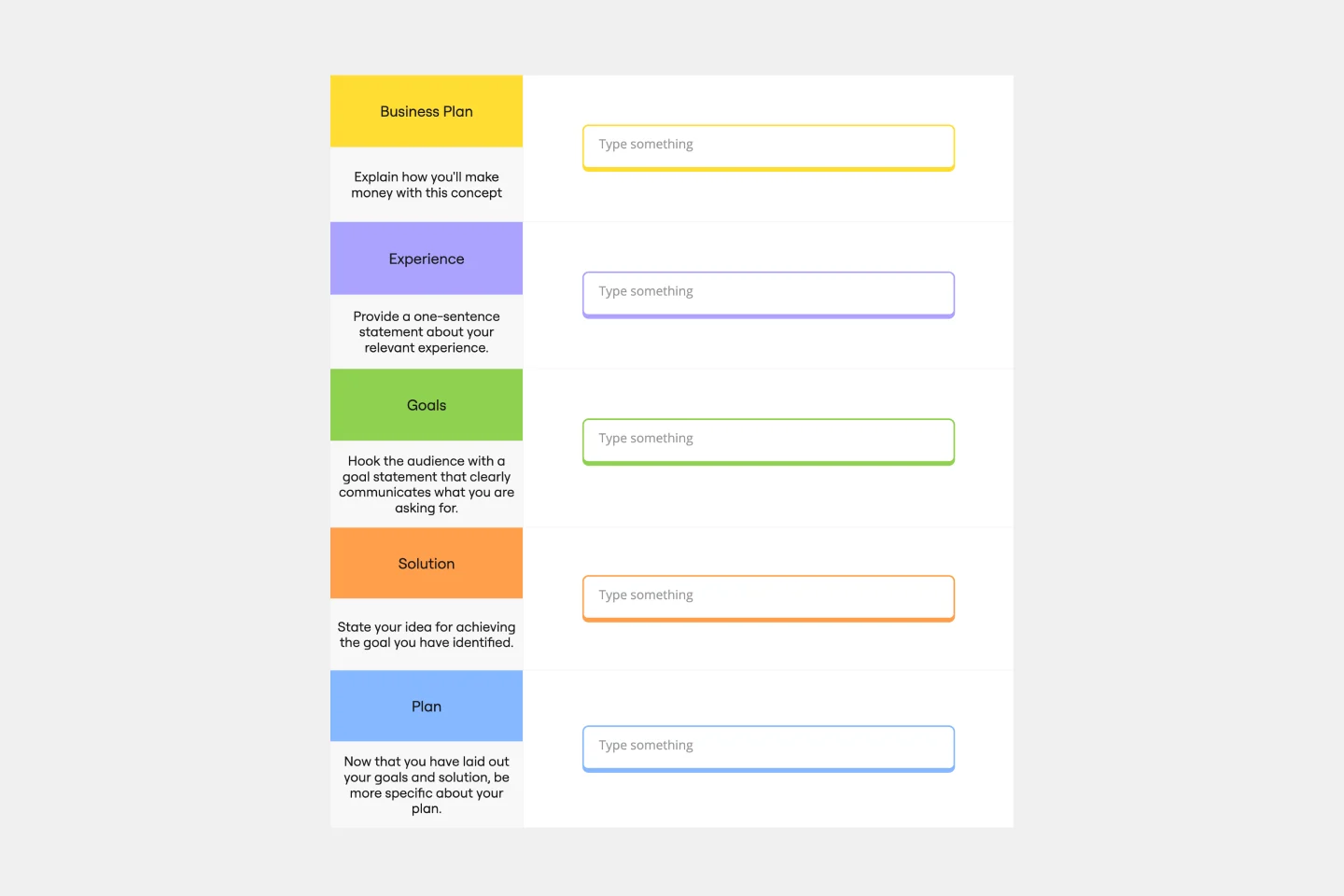Business case templates
Our business case templates help you build strong, compelling arguments effortlessly. Whether you're planning projects, securing approvals, or evaluating investments, these templates provide a clear structure to outline benefits, risks, and potential outcomes, ensuring your case is well-supported and persuasive.
Business Pitch Template
Works best for:
Business Pitch
The Business Pitch Template uses visual aids to enhance your pitch, making it more impactful and easier to understand. This gives your pitch an edge, leaving a lasting impression and greatly improving your ability to convey your ideas persuasively.
Business Plan Template
Works best for:
Strategy & Planning
The Business Plan Template not only streamlines the complex task of crafting a business plan but also enhances collaboration and creativity. Whether you're a seasoned entrepreneur or just starting, Miro's Business Plan Template offers a practical, comprehensive solution to turn your business ideas into actionable strategies.
Business Case Template
Works best for:
Leadership, Marketing, Market Research
Impress stakeholders and get buy-in with this complete Business Case Template. Cover all key elements of a business case and ensure your pitch is successful.
Join thousands of teams collaborating and doing their best work on Miro.
Sign up freeAbout the Business Case Templates Collection
Our business case templates are designed to help you build strong, compelling arguments effortlessly. Whether you're planning projects, securing approvals, or evaluating investments, these templates provide a clear structure to outline benefits, risks, and potential outcomes, ensuring your case is well-supported and persuasive.
Why you'll love our business case templates
Our business case templates offer many benefits that make them indispensable for business and project managers:
Clarity and structure: Each template is designed to provide a clear and logical structure, making it easy to present your case effectively.
Time-saving: With pre-built sections and prompts, you can quickly fill in the necessary information without starting from scratch.
Professional quality: Our templates are crafted to meet professional standards, ensuring your business case looks polished and credible.
Collaboration-friendly: Our canvas allows for real time collaboration, enabling your team to work together seamlessly on the same document.
Customizable: Tailor each template to fit your specific needs and preferences, ensuring your business case is unique and relevant.
How to use the business case templates in Miro
Using the business case templates is straightforward and intuitive. Follow these steps to get started:
Select a template: Choose the business case template from Miro's template library that best fits your needs.
Customize the template: Fill in the pre-built sections with your specific information, adjusting the content to suit your project or proposal.
Collaborate with your team: Invite team members to collaborate in real-time, allowing for seamless input and feedback.
Review and refine: Go through the completed template, making any necessary adjustments to ensure clarity and completeness.
Present your case: Use the finished business case template to present your proposal to stakeholders, securing
approvals and moving your project forward.
When using our business case templates, you can streamline the process of creating compelling business cases, ensuring your team thrives and achieves its goals.
